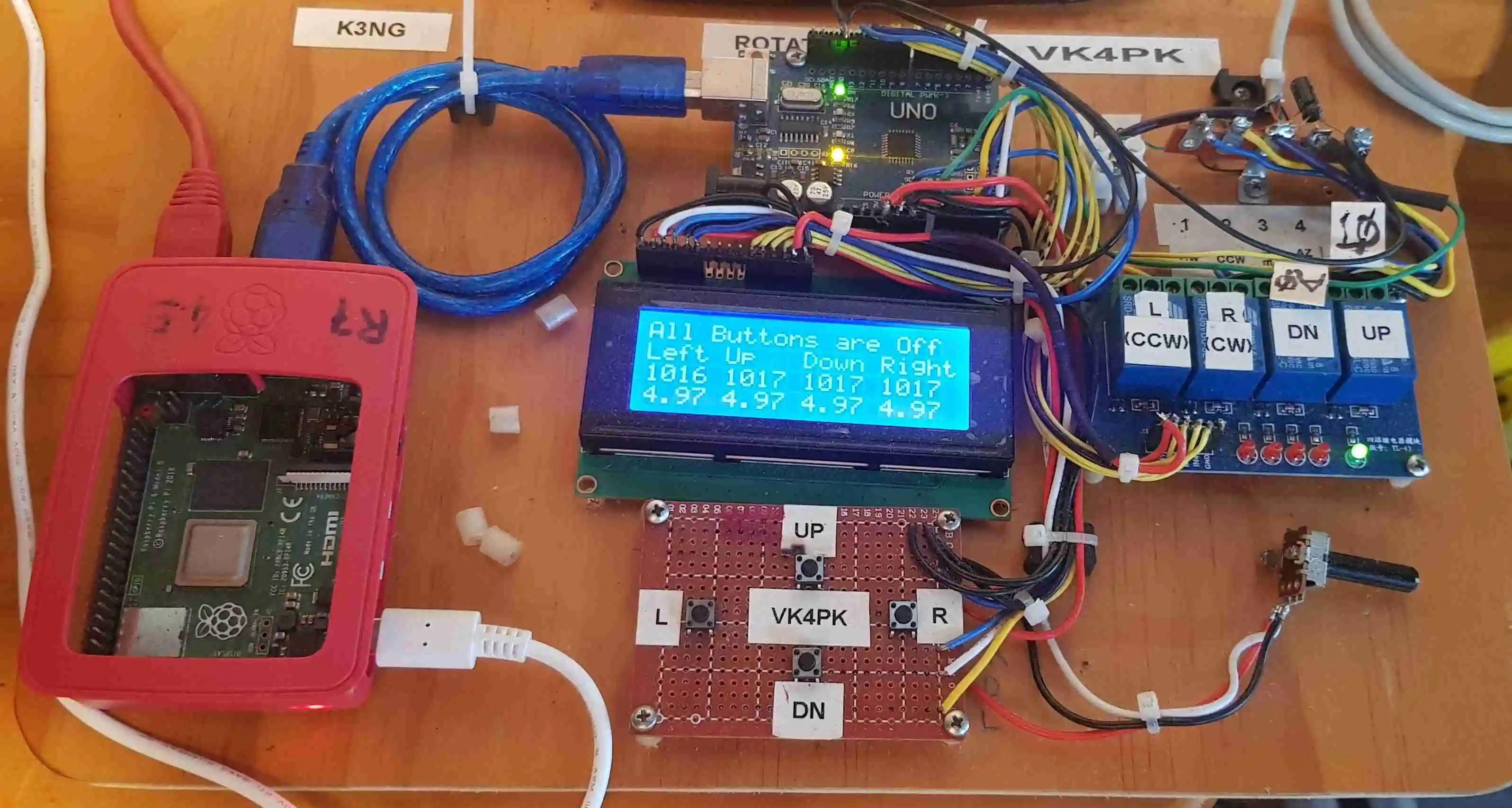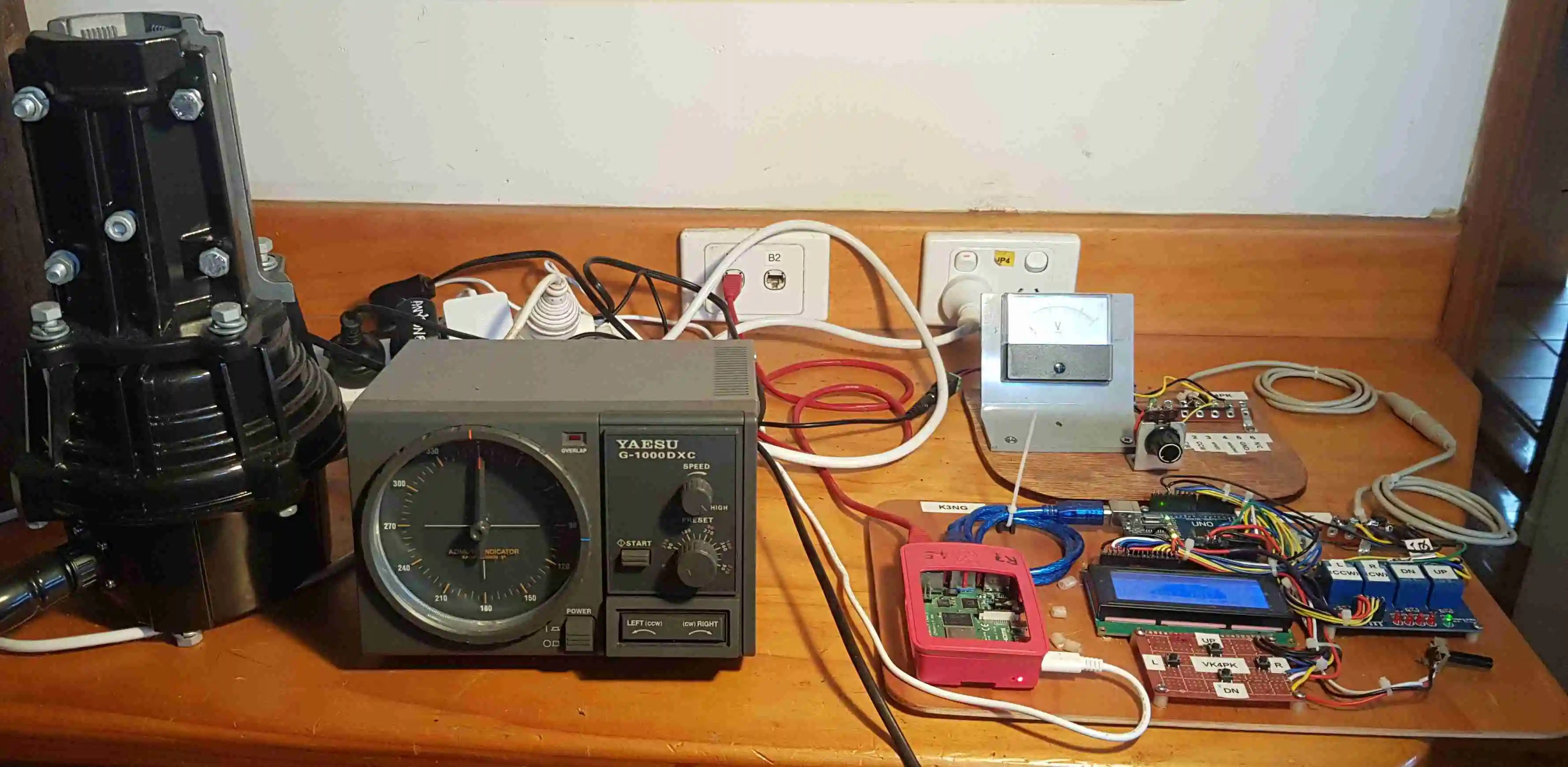

This is an Arduino-based rotator interface that interfaces a computer to a rotator or rotator controller, emulating the Yaesu GS-232A/B and Easycom protocols which are supported by a myriad of logging, contest, and control programs. It can be easily interfaced with commercial rotator control units. With the addition of a proper capacity power supply and several interface components such as relays, this unit could also serve as a total replacement for a rotator control unit or serve as the basis for a 100% homebrew rotation system. Several azimuth and elevation position sensors including potentiometers, rotary encoders, and I2C devices are supported. The code is very flexible, modular, and easy to read allowing intermediate and advanced experimenters and builders to customize it.
Source Code for the K3NG Rotator Controller: https://github.com/k3ng/k3ng_rotator_controller
There is a non blocking serial interface coded to allow I/O to a RPI via USB so it has an easily
implemented gateway to the internet for remote control.
Non-blocking receiving of commands over serial interface using the SafeString-library [code example]:
https://forum.arduino.cc/t/non-blocking-receiving-of-commands-over-serial-interface-using-the-safestring-library-code-example/1004077
Serial is used for communication between the Arduino board and a computer or other devices like the Raspberry Pi. All Arduino boards have at least one serial port (also known as a UART or USART), and some have several.
Serial:A lot of work has gone into this project and it caters for many different rotators and sensors. The arduino coding is not difficult and the Arduino platform is inexpensive and well developed. What it needs is to buy a few PCB’s from https://jlcpcb.com/ and design and 3D print some front panels with an touch screen and arrow keys interface.
[Top][Home]